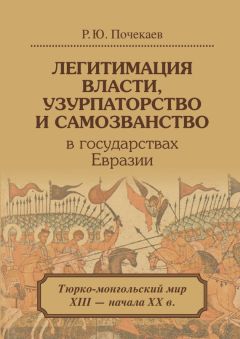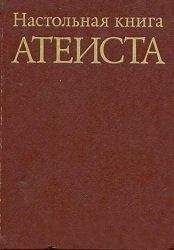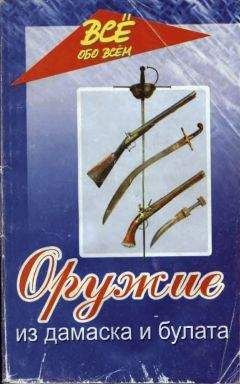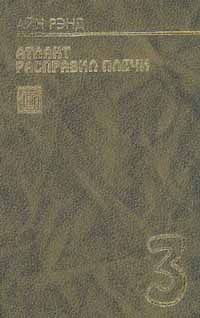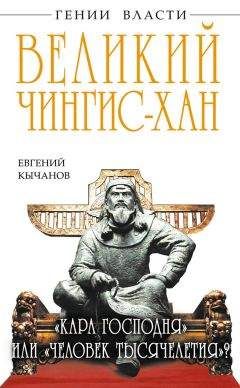Ознакомительная версия.
Undoubtedly, such claims were daring challenges to the rightful monarchs and claimants for the throne. That’s why dif erent types of usurpations as well as impostures were dif erent challenges to the “Golden Blood Line” of Chinggisids.
The part I, “Factors of Legitimacy in Imperial Epoch”, gives the examples of usurpations in the Mongol Empire and its immediate successive states of the imperial type – Golden Horde, Yuan Empire, Ilkhanate, Chagatay state by representatives of Chinggisid ruling family in 13–14th cent. (with some typical examples of the post-imperial period of 16–17th cent.). It could seem strange because each descendant of spear side of Chinggis Khan dynasty had right to become a khan. Nevertheless, a lot of them could be characterized as usurpers as they attempted to get the throne with legal abuses.
The chapter 1, “References to Law and Testament”, describes cases of usurpations in the 13th cent. As laws of Chinggis Khan after his death still were solid, all attempts to obtain a power should be justifi ed by legal rules. So, each pretender had to fi nd rightful substantiation for his claims. It was easier to fi nd them during the periods of interregnum, that’s why many attempts of usurpation were made after death of one khan and before election of his successor; the most ef ective became reference to law or testament of previous monarch which could be interpreted in the interests of concrete claimant. Another type of usurpation took place when two (or more) pretenders were elected as it should be in accordance with law: they became usurpers in opinion of their competitors, and only victory in war made one of them “legal monarch” and another subsequently, “rebel”.
In the chapter 2, “From the Empire to Empires: New Arguments in Claims for Power”, new political conditions are analyzed as well as new substantiations of fi ght for power in the Golden Horde, Yuan Empire, Ilkhanate and Chagatay state. Reference for law and testament were no longer ef ective and pretenders claimed the throne as elder representatives of the dynasty, or of cial co-rulers (and heirs) of former khans. If pretender couldn’t fi nd such argument he accused legal monarch and in this case transformed from rebel to legal claimant who defended law and order. Sometimes such accusations had strange consequence: all descendants of accused (and condemned) monarch also were deprived of right to ascend the throne and, thus became “usurpers by origin” if still dared to fi ght for power.
The part II, “Collapse of Empires: ‘Old’ and ‘New’ Factors of Legitimacy”, devoted to period of dissolution of imperial Chinggisid states when political authority of the “Golden Blood Line” decreased and its members lost their monopoly for supreme power in the Turko-Mongol states. New pretenders of non-Chinggisid origin challenged them in fi ght for the throne.
In the chapter 3, “The Genealogical Factor”, is described the fi ght for power of some pretenders who still relied on factor of origin as the were relatives of Chinggisids: as descendants of khans’ daughters and sisters of descendants of more distant relatives of Chinggis Khan by spear side. This relation to Chinggisids was demonstrated by using khan’s title, issuing khan’s decrees (‘yarlks’), as well as by continuation Chinggisids’ policy in international, military, trade and even cultural (including historical works and poetry) fi elds.
Substantial part of non-Chinggisid pretenders, however, couldn’t fi nd ties with the “Golden Blood Line” and had to fi nd “new” factors to justify their claims. In the chapter 4, “Religious Factor”, are analyzed attempts to obtain the throne by pretenders who relied on religious substantiations of their rights. In the Turkic world there were, as a rule, descendants of respected Moslem clergymen (especially seyids and hojas who were considered as descendants and relatives of the Muhammad the Prophet). In Mongol states another type of religious legitimating was widespread: will of Buddhist hierarchs (as Dalai Lama of Tibet or Bogd Gegen of Mongolia) to ascend khan’s title by concrete rulers even of non-Chinggisid origin.
And the third (also “new”) factor is examined in the chapter 5, “Regional Factor”. Disintegration of Chinggisid empires caused fi ght of dif erent lines of Chinggis Khan’s descendants for power in new-founded states. Permanent change of dif erent monarchs on the thrones as well as recurrent leaving of own state in search of more prestigious and rich one forced local population to reject the right of Chinggisids to rule and give power to native leaders – not rare descendants of former Chinggisids’ of cialls.
The part III, “Steppe Empires under the Power of Settled Empires: Foreigh Factor of the Fight for Power”, devoted to period of 16th – beginning of the 20th cent. (with prelude in the end of the 14–15th cent.) when Turko-Mongol states were placed under authority of foreign empires such as Ottoman, Chinese, Russian. It caused the appearance of new types of non-legitimate rulers.
In the chapter 6, “Attempts of Establishment of the Foreign Suzerainty and the Problem of Legitimacy of Foreign Protégés”, dif erent types of non-legitimate monarchs are characterized: Chinggisid khans who already were in power but than became vassals of foreign monarchs; Chinggisid khans who ascended the throne with help of foreign suzerains; non-Chinggisid khans supported by foreign monarchs as alternative rulers in Turko-Mongol states.
The chapter 7, “New Substantiations of Taking Power during the Foreign Suzerainty”, is about monarchs which came to power not with support but by direct order of suzerains. Attitude of subjects to such khans was dif erent at the early stage of foreign suzerainty (when such protégés were considered as usurpers) and the later one (when order of suzerain became the main factor of legitimacy, even more important than Chinggisid origin). There also in this chapter cases of ascension the thrones of the Turko-Mongol states by foreign monarchs are analyzed. Such “khans” themselves, as a rule, didn’t need in justifying of their power, but new subjects made legal substantiations to present their power in the Turko-Mongol world not a conquest and submission but as a legitimate rule. One more new type of usurpation appeared in the period of foreign suzerainty was connected with election of khans from hereditary Chinggisids and with observance of all legal rules but without confi rmation of suzerain. Such khans (absolutely legitimate in the previous period of independence) thus became the usurpers!
The chapter 8, “National Liberation Movement As Argument to Claim the Power”, devoted to another factor of legitimating of pretenders’ claims: using the national liberation movement as argument to ascend the throne. Of course, such argument could be used only during the period of foreign dominance. And if one group of pretenders came to power relying only on national liberation movement, another used more sophisticated means of legitimating their claims for power. So, descendants of former infl uent clergymen used religious factor (which was described in details in the forth chapter) in the new way: religion became the factor of unifi cation for fi ght against conquerors, and religious leaders, thus, became national ones! Some rulers appointed by foreign authorities were able to understand that their states were ready to fi ght against suzerains and, refusing factor of foreign support, relied on national factor to save and increase own power.
The part IV, “Impostors in the Turko-Mongol States”, is about pretenders who tried to obtain the throne posing themselves as legal claimants. As in other states and epochs, peaks of impostures were in times of troubles when real claimants were eliminated in very short terms and this facts were not known to the most part of people.
In the chapter 9, “Types of Impostors”, dif erent categories of pretenders are described: ones posed themselves as real members of ruling families, others pretended to be fi ctitious princes; specific group of impostors was presented by princes whose origin was not clear and they were recognized as legal heirs by one part of subjects and as usurpers by another one. Besides that some cases of impostures couldn’t be attributed to one of above mentioned types (for example, adopted or legitimized sons, persons who pretended not to be members of royal families but subjects of foreign suzerains, etc.).
In the chapter 10, “Limits of Claims for Power”, author analyzed the “scale of ambitions” of specific impostors. So, pretenders for the throne of regional level had chance to obtain and save power for some time, as for claimants for supreme power, practically all of them were disclosed and killed or executed. In this connection it’s interesting to mention rather specific group of impostors who quite didn’t attempt to reach the regional or supreme power: some carpet-baggers posed themselves as rulers (who, in fact was already dead) or descendants of khans to get protection or to improve own well-being.
The part V, “Usurpers and Impostors of History”, devoted to historiography phenomenon: some rulers became usurpers and impostors in historians’ opinion. The cases of such accusations hurled by medieval historians are examined in the chapter 11, “Usurpers and Impostors in the Medieval Historiography”, and the same accusation from the scientists of the 19th – beginning of the 21th cent. – in the chapter 12, “Usurpers and Impostors in the Modern Historiography”.
The research is based on the wide range of historical sources (chronicles, of cial documents, memoirs of contemporaries, etc.) as well as on research works since 18th to the beginning of the 21th cent.
«Золотой род» (Алтан уруг) – распространенный в чингисидской историографии эпитет династии Чингисидов.
Впрочем, сам Т. Барфилд весьма скептически оценивает вероятность действительной принадлежности всех правителей, считавшихся Чингисидами, к потомству Чингис-хана.
Среди довольно многочисленных работ, посвященных истории Чингисидов в разных государствах и регионах, можно выделить труд, охватывающий историю практически всех чингисидских династий (за исключением чисто монгольской ветви) на протяжении всего времени их правления [Султанов, 2001; 2006].
Соотношение этих терминов уже становилось предметом исследования (см., напр.: [Безкоровайная, 2010]).
Отметим, что ситуация с наследованием власти в чингисидских государствах не была уникальной: аналогичный порядок существовал и в Византийской империи, где даже после того как власть императоров-базилевсов стала передаваться в рамках одной династии, формально сохранялись избрание и официальная церемония инаугурации. Даже в случае, если на престол всходил сын предыдущего монарха, в течение длительного времени являвшийся его официальным соправителем (см.: [Карпов, 2011, с. 52–53]).
Сразу стоит отметить, что за всю историю чингисидских государств лишь очень немногие монархи предпринимали попытки установить четкий порядок престолонаследия, в частности, можно вспомнить примеры золотоордынского хана Узбека и бухарского хана Мухаммада Шайбани, пытавшихся ввести передачу трона от отца к сыну. Кроме того, в ряде случаев подобная передача осуществлялась de facto, без формального закрепления статуса сына как потенциального преемника отца.
В другой части «Сборника летописей» Рашид ад-Дин отмечает, что «юрт, ставки, [имущество], казна, [семья], эмиры, нукеры, гвардия и личное войско Чингис-хана были в его подчинении» [Рашид ад-Дин, 1960, с. 107].
Интересно, что и сам Угедэй прекрасно осознавал прочное положение Тулуя, что нашло отражение в его словах, произнесенных на курултае, который все же состоялся в 1228 или 1229 г. Рашид ад-Дин излагает этот сюжет следующим образом: «Согласно завещанию Чингис-хана, достоинство каана утвердили за Угедей-кааном. Сначала сыновья и царевичи единодушно сказали Угедей-каану: “В силу указа Чингис-хана тебе нужно с божьей помощью душой отдаться царствованию, дабы предводители непокорных были готовы служить [тебе] жизнью и дабы дальние и ближние, тюрки и тазики [все] подчинились и покорились [твоему] приказу”. Угедей-каан сказал: “Хотя приказ Чингис-хана действует в этом смысле, но есть старшие братья и дяди, в особенности старший (sic! – P. П.)брат Тулуй-хан достойнее меня, [чтобы] быть облеченным властью и взять на себя это дело; так как по правилу и обычаю монголов младший сын бывает старшим в доме, замещает отца и ведает его юртом и домом, а Улуг-нойон – младший сын великой ставки. Он день и ночь, в урочный и неурочный час находился при отце, слышал и познал порядки и ясу. Как я воссяду на каанство при его жизни и в их присутствии?” Царевичи единогласно сказали: “Чингис-хан из всех сыновей и братьев это великое дело вверил тебе и право вершить его закрепил за тобой; как мы можем допустить изменение и переиначивание его незыблемого постановления и настоятельного приказа?” После убедительных просьб и многих увещеваний Угедей-каан счел необходимым последовать повелению отца и принять указания братьев и дядей и дал согласие» [Рашид ад-Дин, 1960, с. 19]. Конечно, отказ Угедэя от предложенного ему трона в значительной степенью являлся данью традиции: еще с давних времен монгольские ханы при воцарении должны были вести себя подобным образом, предлагая «более достойные» кандидатуры – так поступал в свое время и сам Чингис-хан, когда ему впервые был предложен ханский титул [Палладий, 1866, с. 93–94; Козин, 1941, с. 137] (см. также: [Грумм-Гржимайло, 1926, с. 405–406]). Правда, интересно отметить, что при описании обстоятельств воцарения Тэмуджина – будущего Чингис-хана автор «Сокровенного сказания» не упоминает, что он отказывался от предлагаемого ему трона. Лишь впоследствии, когда избравшие его родичи изменили ему, откочевав к кераитскому Ван-хану, Тэмуджин через своих послов укорил их, напомнив, что такой отказ имел место, и у каждого из них был шанс стать ханом вместо самого Тэмуджина.
Ознакомительная версия.
